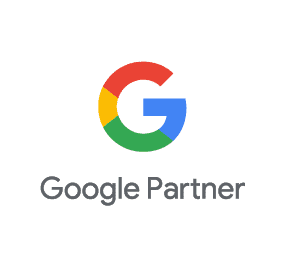Just like the new kid on the block, many people are meeting AI (artificial intelligence) with fearful scrutiny, unsure how it should fit into their daily lives. To be fair, any powerful tool deserves careful consideration in how we use it. But here’s the thing: the only way to understand AI’s role in our lives is to actually get to know it.
This article will attempt to reintroduce AI not as the evil villain in the story, but as a tool in the hands of hopeful heroes… the culmination of centuries of ingenuity and an unrelenting drive to enhance the human experience.
Discontentment: The Spark Behind Curiosity & Progress
Behind every great advancement — from the invention of the wheel to the abolishment of slavery to the ongoing race to cure cancer — lies a powerful impulse that sets humanity apart from all other species: discontentment. This restlessness with how things are is often viewed as a flaw. However, if we take a step back, we might also realize it as one of mankind’s strongest traits, the driving force of progress, fueling curiosity and inspiring us to reach beyond our current abilities.
From John Steinbeck’s The Pearl:
“For it is said that humans are never satisfied, that you give them one thing and they want something more. And this is said in disparagement, whereas it is one of the greatest talents the species has and one that has made it superior to animals that are satisfied with what they have.”
The very foundation of AI is woven from this restless energy: from ancient Greek myths about thinking machines to the 20th-century breakthroughs of Alan Turing, our inability to accept what is has fueled our pursuit of what could be. Whether building automatons centuries ago or engineering learning algorithms today, it is this perpetual longing that lies at the core of every social and technological leap.
Fast forward to today, and AI is more of a refined triumph than a novel idea. It’s become a living, breathing part of our daily lives, showing up in incredibly useful ways.
Positive Examples of AI in Action
Despite the fear and suspicion that still surround AI, it’s important to remember that technology itself is neutral — it’s the intention behind its use that makes it helpful or hurtful. All around us, people with empathy and vision are using AI for good: supporting disadvantaged groups, advancing healthcare, and building tools that enrich daily life. We each have a role in shaping how AI serves our world; it’s up to us to choose to use it with kindness, creativity, and integrity.
Here are just a few ways AI is already improving our lives:
Navigation and Traffic:
Imagine no more traffic jams, buses that always arrive on time, or a car that warns you before breaking down. We’re currently using AI to resolve these daily problems and more. From software like Google Maps and Waze that use AI to analyze live traffic data and suggest faster routes, to the numerous autonomous vehicle tech companies who have tires on the street as we speak, AI is revolutionizing transportation as we know it.
Personal Health Tracking:
Wearables like Apple Watch and Fitbit use AI to monitor heart rates, detect irregular heart rhythms, and even notify emergency contacts if it detects a fall. There are countless stories of these devices saving lives — such as a New Jersey man whose smartwatch detected atrial fibrillation and prompted him to seek medical attention before a heart attack occurred. Read more real life examples here.
Early Breast Cancer Detection:
AI analyzes mammogram images to help doctors spot breast cancer earlier and with greater accuracy, supporting quicker, more reliable diagnoses. Researchers suggest that combining AI with expert radiology offers the most reliable and effective approach to early breast cancer detection.
Language Translation:
Ever traveled abroad and struggled to read a sign or menu? AI-powered apps like Google Translate turn your phone camera into a universal translator, instantly converting text in real life. During the Tokyo Olympics, staff and visitors used handheld translators powered by AI to overcome language barriers in real time, connecting people from all around the world.
Smart Home Devices:
AI is making homes safer, smarter, and more efficient. Think of Nest thermostats that learn your schedule to manage heating and cooling, saving energy and money without you lifting a finger or AI-enabled water detectors that prevent costly leaks. AI security cameras, like those from Arlo or Ring, have advanced from merely recording or sounding an alarm to distinguishing familiar faces from strangers and alerting homeowners of unusual behaviors.
Banking and Fraud Detection:
AI algorithms scan billions of transactions each day for suspicious activity. In 2023, Chase Bank‘s AI-driven security instantly flagged and halted a large-scale fraud attempt, protecting thousands of customers. Similarly, apps like Cleo and Mint use smart data analysis to alert users about unusual spending and help manage budgets in real time.
Visual Assistance:
Apps such as Be My Eyes combine AI with human volunteers to provide instant help to those who are visually impaired. In 2024, Be My Eyes partnered with OpenAI to launch a feature where AI describes photos, documents, and even complex scenes, allowing users with vision loss to access the visual world with unprecedented independence.
Personalized Education:
Thanks to AI, learning is no longer one-size-fits-all. Adaptive learning platforms, for example, customize material to suit a student’s unique pace. If learners struggle with certain concepts, these tools provide additional resources or personalized practice tasks to bridge knowledge gaps. These AI tutors provide more affordable access to quality education, bridging socio-economic wealth gaps.
These are just some of the countless ways people are using AI to make our lives simpler, safer, and more enjoyable. By addressing challenges with speed, precision, and resourcefulness, AI is paving the way for innovations that will revolutionize the human experience.
Using AI Responsibly
Of course, with great power comes greater responsibility. We would be foolish not to approach such a powerful technology with mindful caution. Just as a knife can be used to heal (as in surgery) or kill, so, too, AI has the potential for assisting us in similar pursuits. No tool is inherently good or bad; its impact depends on how we choose to wield it. That means fostering transparency, rooting out bias in algorithms, protecting privacy, developing safeguards against malusers and resisting the temptation to over-rely on automated systems. The goal should never be to replace human thought or responsibility but to expand what we can achieve in partnership.
The Future with AI
Rather than casting AI as a shadowy figure lurking in the background, let’s recognize it for what it truly is… a testament to our relentless curiosity and ingenuity. Every interaction we have with AI, whether big or small, is another chapter in our pursuit of progress. The villain or hero part? Why, that’s totally up to you and me. By embracing AI thoughtfully, ethically, we honor the very qualities that set us apart as humans: innovation, ambition, and yes, even discontent.
So here’s your invitation: approach AI with open eyes and an open mind. Discover how this tool, like any other, can amplify your abilities, spark new possibilities, and help write a story where we grow stronger together. The future isn’t about fearing what we’ve built — it’s about seeing the rescue in it and learning to use it wisely.
For more info on how to begin integrating AI into your business strategy, read our blog post here.
SOURCES:
https://online.uc.edu/blog/artificial-intelligence-ai-benefits/
https://databasetown.com/benefits-of-ai-in-everyday-life/
Google adds Gemini AI to its Maps, Waze apps
Google Maps, Waze And Even Rivian’s Map Add AI Features
How AI Takes Wearables to the Next Level
How Wearables Are Slowly Turning Into Personal Health Coaches
3 New AI Smart Home Features Arrive With Gemini and Google NestHow AI will disrupt fraud prevention & detection technologies
AI fraud detection: the complete guide
Introducing: Be My AI
Introducing: Be My AI
Be My Eyes: Accessibility Technology for blind & low vision












